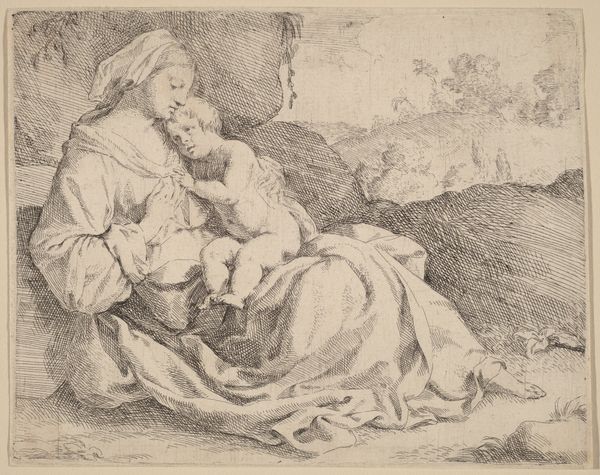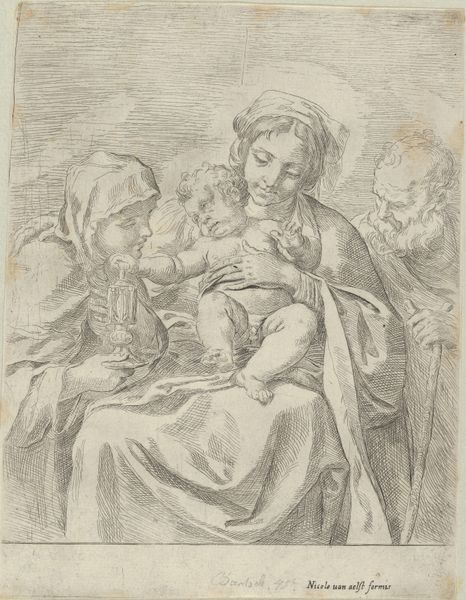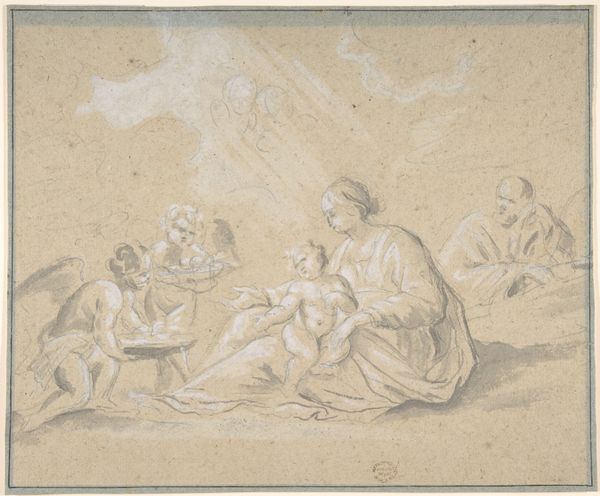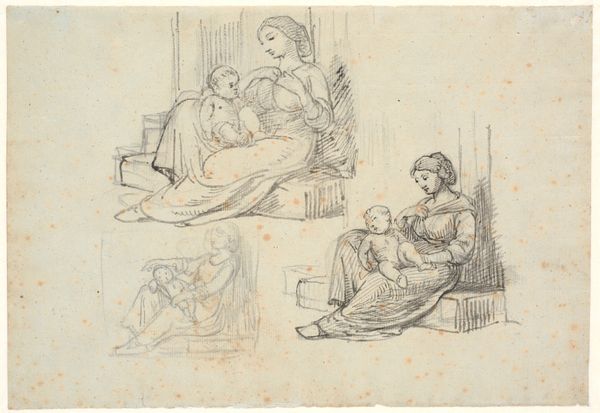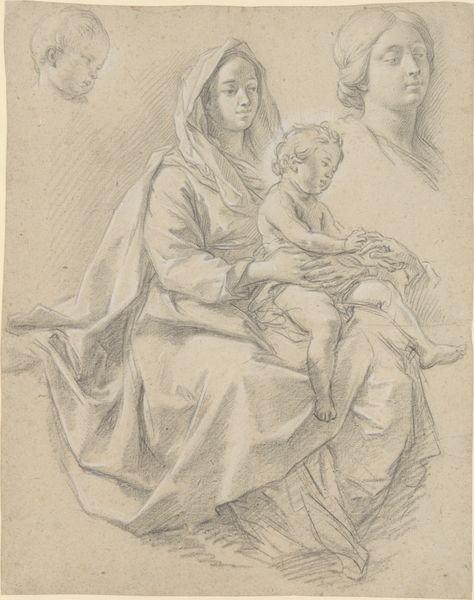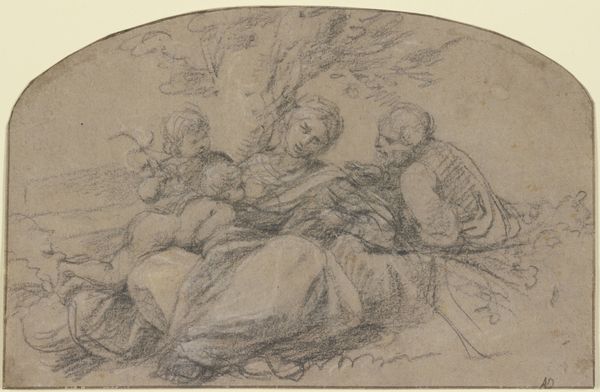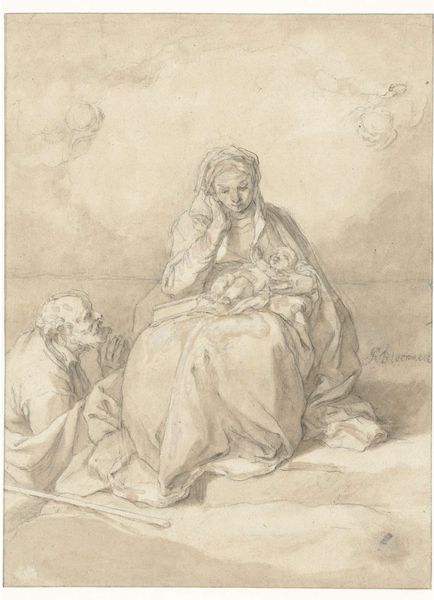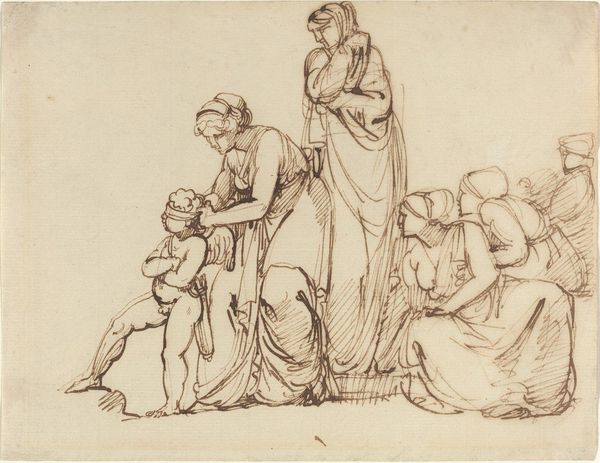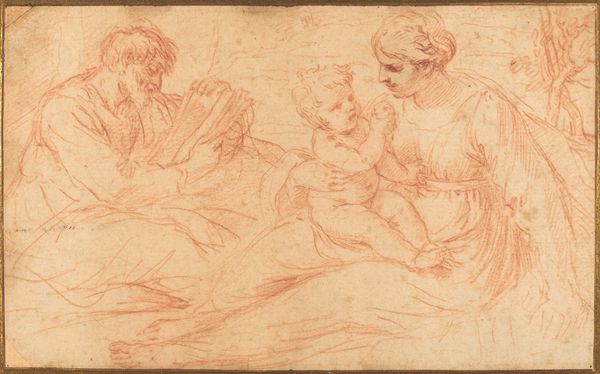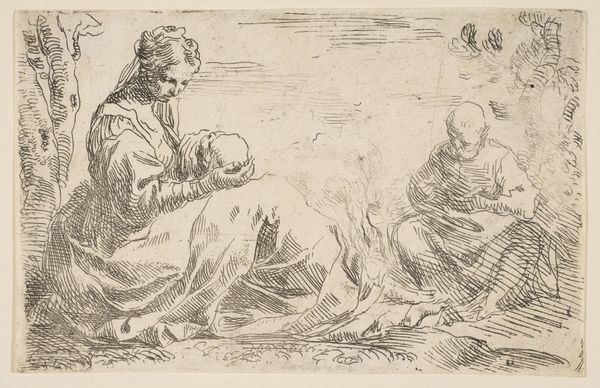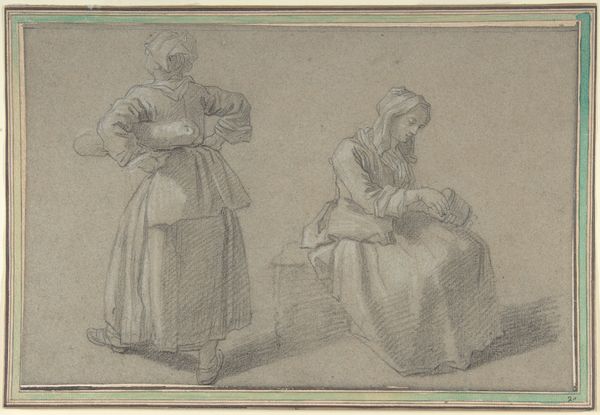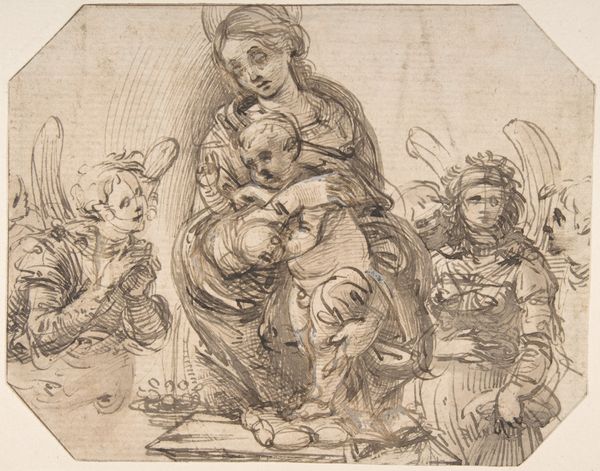
Study Sheet with Two Seated Children and an Angel 1600 - 1648
0:00
0:00
drawing, print, ink
#
drawing
# print
#
figuration
#
11_renaissance
#
ink
#
italian-renaissance
#
angel
Dimensions: 4 x 5 5/16 in. (10.2 x 13.5 cm)
Copyright: Public Domain
Curator: Before us we have "Study Sheet with Two Seated Children and an Angel," a drawing in ink, made sometime between 1600 and 1648, and attributed to Hendrick Goudt. It's currently part of the Metropolitan Museum of Art's collection. Editor: My first impression is one of profound tenderness, but also, maybe a subdued defiance? Look at how solidly these women are planted, even in a sketch. Curator: The maternal theme is definitely front and center. Nursing, protective, ever-watchful. Think of how the Madonna and Child image permeates the cultural memory of the West, shaping ideas of idealized motherhood, yet, this work presents them as study figures not paragons of virtue. Editor: Exactly! I read this more as a revolutionary affirmation of female strength. You have a very realistic rendering of mothers and children as human figures. These mothers look exhausted. And what’s also key to notice here is that both adults have children in need of nursing—one may even say in a clear depiction of wet nursing. The art provides dignity to a topic that's hardly ever shown, and offers social mobility to mothers. Curator: An interesting reading. Notice the symbolic contrast between the grounded figures of the women and children versus the angel floating ethereally above. Angels are very versatile figures. Do you interpret the angel as a protective presence, a symbol of divine blessing, or something else? Editor: Maybe a commentary on aspiration, or even escape. This angel offers a view to the concept of care. The angel as an externalized dream – a wish for relief from the constant demands of childcare. If these images are a portrayal of wet nurses, for instance, is the child being fed not by the natural mother, perhaps in some contexts, this externalized dream serves as a reminder of a desire for freedom from work. Curator: That perspective allows us to consider Goudt’s artistic milieu. There was growing naturalism within religious artwork in the period, an appeal to humanist principles and observations from daily life. It’s possible these ‘studies’ reflect on new visual lexicons to reimagine hallowed images like those of the Virgin Mary. Editor: I agree, placing it within the rise of humanism really lets us see how innovative these depictions really are. The sketches of each composition suggest possibilities and challenge us, even now, to reassess preconceived notions. Curator: Ultimately, a single drawing invites us into a far-reaching conversation about not only religion, but women and families as pillars of resilience and societal structures. Editor: Precisely. And prompts us to examine, even today, how such roles are acknowledged, represented, and either reinforced or defied.
Comments
No comments
Be the first to comment and join the conversation on the ultimate creative platform.
